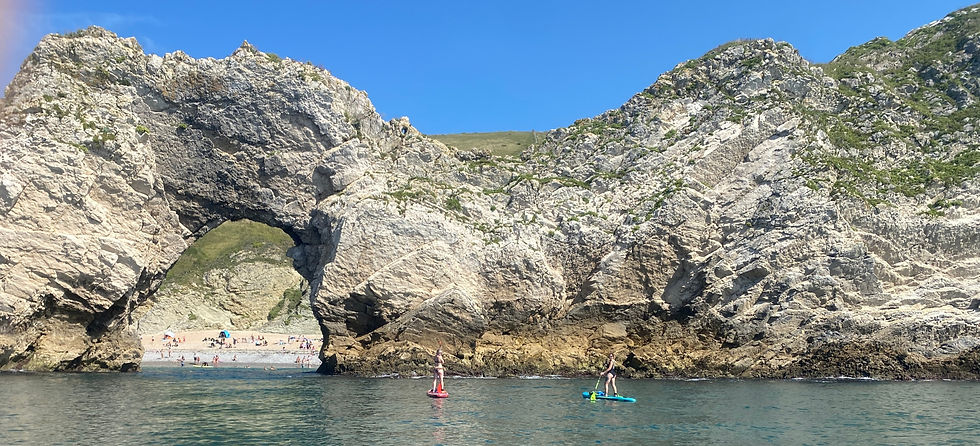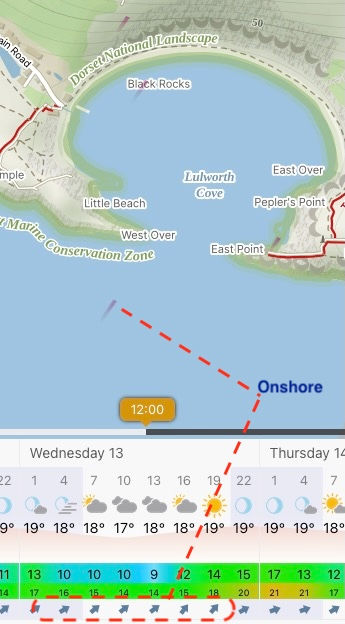Paddling from Lulworth Cove to Durdle Door in Dorset.
- Breakwater Coaching
- 50 minutes ago
- 2 min read

First up, this is not a how to guide, or set of instructions. It is a set of experiential guidelines that might assist some paddlers, who have the required competence and ability to paddle this stretch of the Jurassic coast.
It’s not possible to provide a more comprehensive set of guidelines, as it requires one to have detailed knowledge of navigation and tides.
The distance between the spots is not hugely far, about 2.5km. So you have to decide if you will paddle a 'there and back' route, or have to carry your equipment up the hill to the car park at Durdle Door.
Are you able to paddle on a river or lake 8-10km distance or more? Since this will/may start to equate to the stamina needed to paddle 5km on the ocean.
Have you checked and have the knowledge to understand the forecast?
You are looking for, at minimum, on-shore wind patterns; in other words the wind is blowing towards the coastline (a southerly wind). The exception to this might be if you are paddling in only one direction, in which case you’d want a cross wind, e.g. the wind blowing in the direction you are paddling.
Onshore forecast looks something like….

The currents are not potent on this section of the coast, compared to further along east. On ‘average’ they will reach approx. just 3km/h. However, when this is combined with a crosswind behind you, your overall assistance will be increased. For instance, the combined effect of 5kph wind and 3 kph of tide, will ‘boost’ you to something more.
With regards to acceptable wind speed, this is a very specific metric, and acceptably different according to ability/experience. As an average measure, anything above 10mph or 16kmh would be reserved for the experienced.
The challenges of this paddle include but are not limited to:
o The land-able points at high tide between these points are far and few between. What will you do if there is an issue between them?
o While the wind and its direction might be acceptable, the ocean works in a complicated way. Ocean swells may well drift in towards the coast creating challenging conditions. It’s exacerbated when these swells bounce off the cliffs in a process known as clapotis. It creates a messy water in the area just off the cliffs, perhaps up to 20m off.
o The wind can change without warning, or the forecast can be delayed. If you can’t get out, you may end up getting blown back to the Cove
BOTTOM LINE: If you are in any doubt about how to interpret the weather and/or your ability, then either don’t go that day, or employ a guide such as ourselves, to accompany you.





Comentários